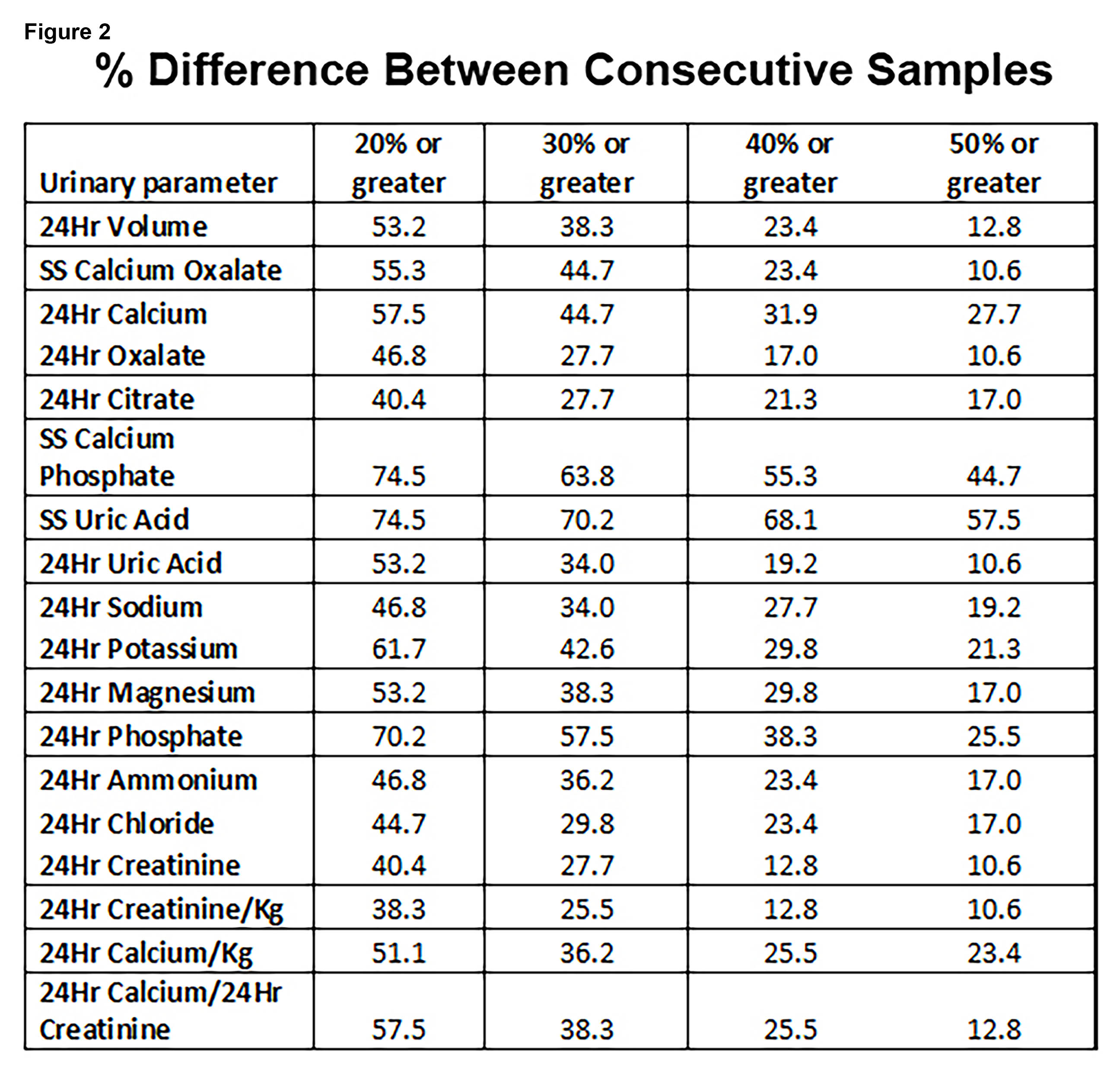Single Versus Two Consecutive 24-Hour Urine Collections in Pediatric Stone Formers
Michael Lam, MD, Solange Bassale, MS, Casey Seideman, MD, Aaron Bayne, MD.
Oregon Health & Science University, Portland, OR, USA.
Introduction: Metabolic evaluation of pediatric stone formers consists of a 24-hr urine collection. However, the data is mixed in the adult literature regarding the adequacy of a single collection versus two sequential collections. In children, it is generally recommended that a 24-hr urine collection be performed after a single stone episode due to the high prevalence of metabolic abnormalities. Despite this practice, no data currently exist evaluating the adequacy of a single 24-hr urine collection in children. Here we sought to characterize 24-hr urine parameter variability in pediatric stone formers.
Materials and Methods: Using a large multi-institutional database of pediatric stone patients, we captured all patients who had two consecutive 24-hr urine collections over a 48-hr period, performed between 2007-2013. For each urine parameter, percent difference was calculated as % Difference = sample difference / (sample 1 + sample 2). Demographics including BMI, age, and gender were collected. Multivariate logistic regression was used to adjust for confounding baseline variables.
Results: A total of 47 patients underwent two consecutive 24-hr urine collections. Significant parameter variability was seen for each individual patient (Figure 1, representative parameters). Up to 75% of patients had 20% or greater variability, up to 70% of patients had 30% or greater variability, 68% with 40% or greater variability and 58% with 50% or greater variability (Figure 2). There was no significant association between age, gender, or BMI with having a 20% or greater difference between two consecutive samples.
Conclusions: There is a large degree of variation in urinary parameters among individual pediatric patients on two consecutive 24-hr urine collections. Urinary parameters have a significant impact as clinicians oftentimes base decisions on these data. Single collection may lead to unnecessary medications for a child, or under treatment of a metabolic abnormality leading to recurrent stone disease. Here we are the first to report and characterize differences in 24-hr urinary collection results in the pediatric population.

Back to 2017 Program
